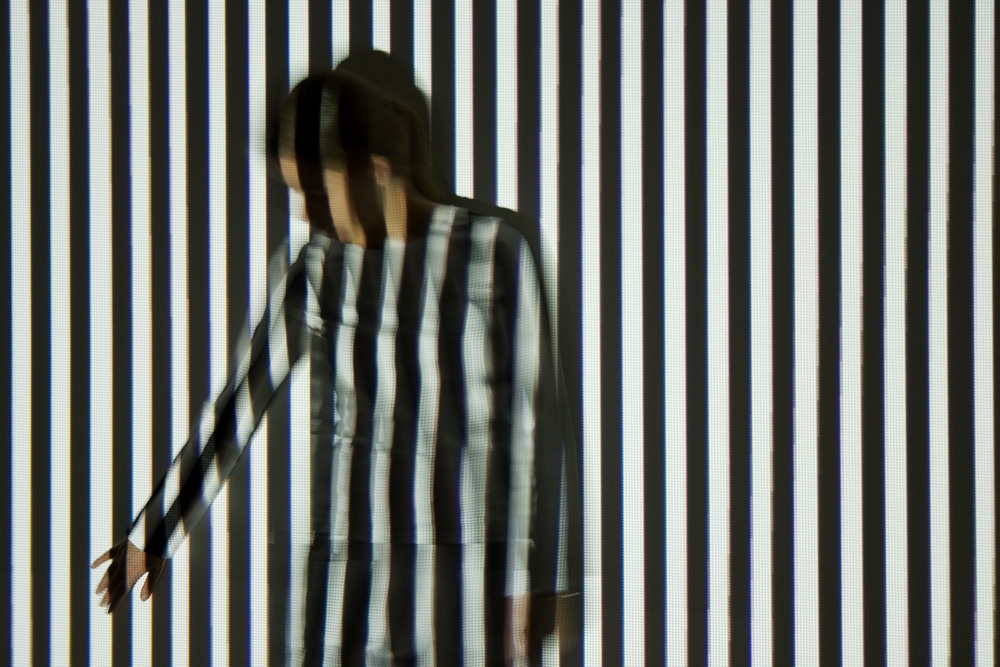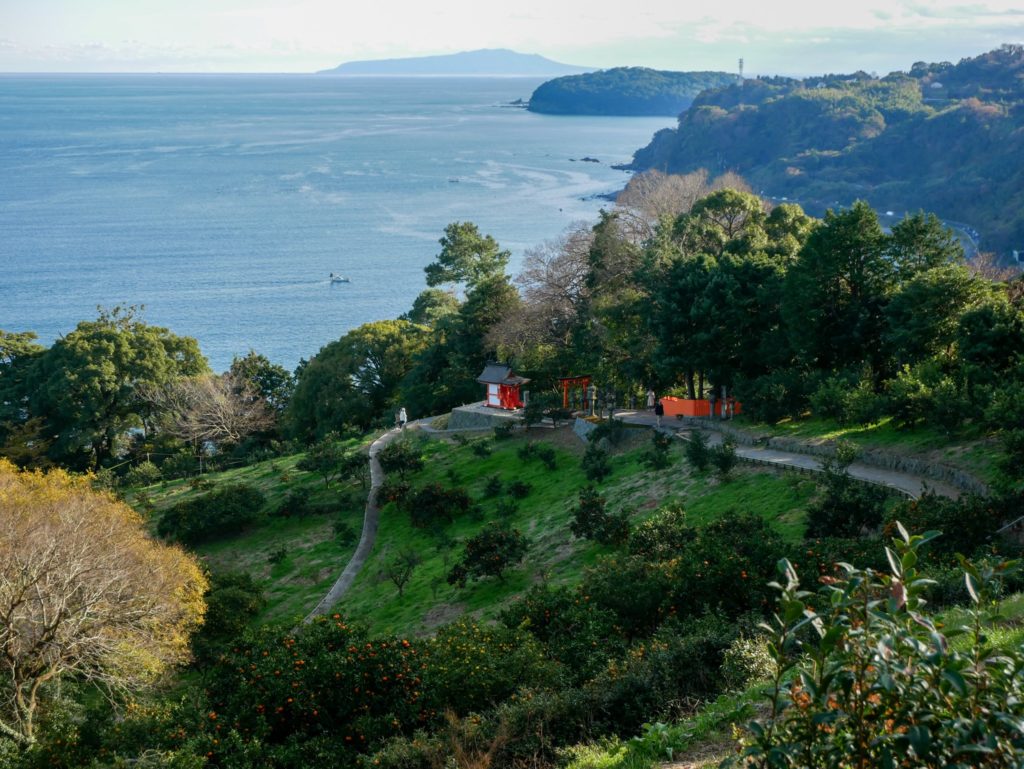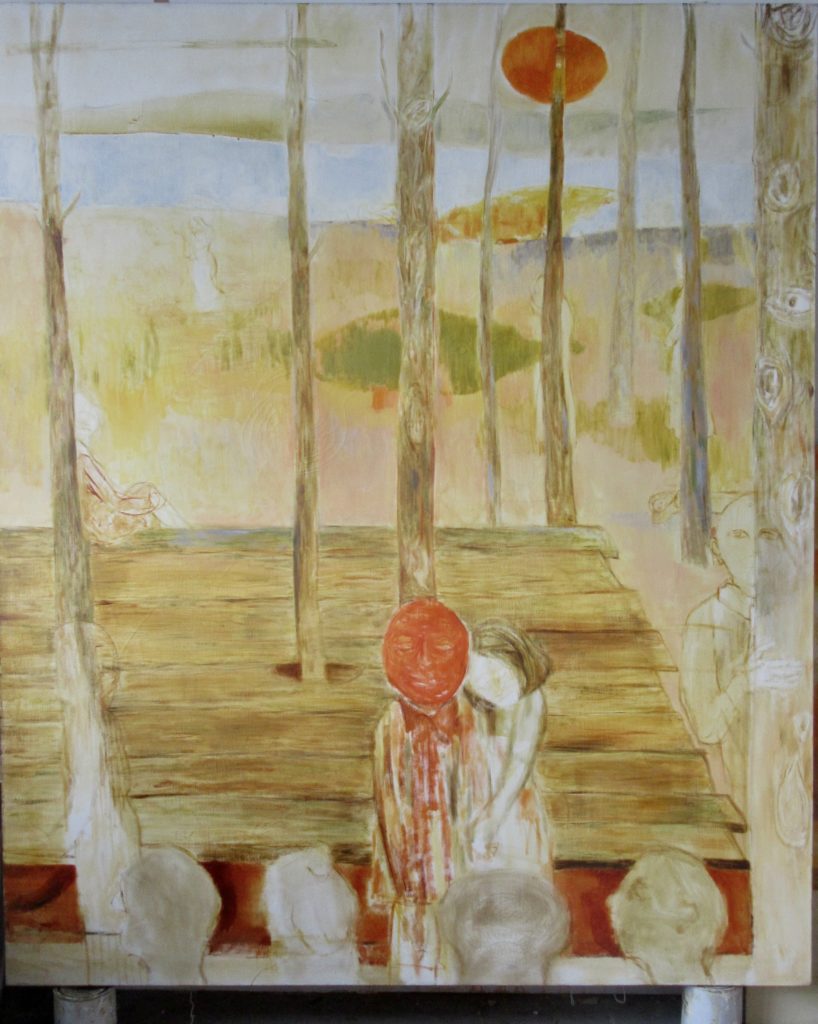Week 140 – March 21 to March 28, 2023
Neringa Naujokaite

Kyung-hwa Choi-ahoi
Anne Brunswic

Kyoko Kasuya

Kasia Ozga

Partially Buried, Colorized Digital Photograph, March 2023.
Robert Smithson created one of his first works of land art, Partially Buried Woodshed, during a one week artist residency at Kent State University (Ohio, USA) in January 1970. The piece, a form of radical “anti urban planning,” infamously argues that demolition can be a valid an artistic practice. To make the work, he partially buried an abandoned 220 m3 wooden shack by pouring twenty truckloads of soil upon it, until the frame of the building bent and cracked under the weight. Once the action was completed he, together with his New York gallerist, officially estimated the value of the work at $10,000. Smithson formally transferred ownership to the university while insisting that it subscribe to an insurance policy to prevent damaged or destruction during maintenance. After the site’s outer wall was tagged with the date of « May 4, Kent ’70, » in reference to the famous shooting by the national guard at Kent State that day, the structure itself was partially burned by arsonists in 1975 leading the University to deny responsibility for the artwork as Smithson’s widow, artist Nancy Holt, fought to preserve it.
After writing about Smithson’s work in my Ph.D thesis 10 years ago, I was finally able to make my own pilgrimage to the artwork’s remains in March 2023. The dilapidated mound now has a small blue commemorative plaque that reads « On this site, Robert Smithson (1938-1973) at the invitation of the students and faculty of the School of Art, began Partially Buried Woodshed / January 1970. » A while ago, underneath the label, someone had scrawled the name « HOLT » in white paint that was now slowly wearing off. Nancy Holt passed away a year before the University installed the sign in 2015.
Liza Dimbleby

Letter from Glasgow: Poisoned Ground.
Twenty years ago I covered a large canvas with lead white primer. This paint has been banned for over thirty years for its potentially poisoning qualities, but I had a big pot, two and a half litres, bought just before the ban. The linseed oil and pigment paste were separating, so I stirred them round with a stick. The paint is made with shaved coils of lead and has a rich body, unlike any other oil paint. I can still see it falling into itself in thick folds, metallic and yellowish, not unlike the shiny emulsion of raw meringue. I miss it.
A lead ground has to sit on the canvas for six weeks in indirect light before it is ready to be painted on. It is a slow process. First, the building of the stretcher, with saws and chisels — marking the half-way point with a small mallet-shaped gauge and piercing the wood with a bradawl to make lap joints, then attaching lengths of beading to the bars with glue and panel pins. Then stretching the canvas, folding and pinning it, not too tight, with the heavy metal staple gun. Grains of dried rabbit skin are melted in a double boiler to form a pungent viscous glue, applied lukewarm and not too strong (“the texture of apple sauce”), and brushed into the canvas weave. Lastly the lead paint, brushed out in all directions, two coats. And wait.
Six weeks became six months, then years, more than six. The canvas was the largest I had ever made, six foot by five, and as the time grew, so did my doubts about whether I could do justice to that huge, confidently constructed surface, to that open ground — whether indeed I knew what to paint, or how.
I set the canvas aside. Meanwhile I moved to London and back again. I had two children and for a while, no studio. The canvas was stored, blank, against the wall of a small spare bedroom and the children scribbled some spirals on it. When the boy and the girl could no longer share a bed the spare room became my daughter’s room and I had to move the canvas to my new studio, where it stood for six more years. I used to steal glances at it from the corner of my eye, as though avoiding its gaze, but whenever I wanted to paint big I would use paper. I could not face the thought of the painting going wrong on that last lead canvas and I did not know what to paint.
This February, after many months of painting shelters on small strips of old torn-up drawings I suddenly needed more room. Without a thought I pulled out the large canvas, propped it up on two old paint tins, and began. A thin spiralling crack had emerged over the years, like a spider’s web, in the lower part of the paint surface, but that helped me to start. I forgot about the canvas as a structure and it became a space. I painted a stage, a shelter on the ground, with trees. And people — faces in the trees or half-emerging from the trees. They wanted to be painted and I was ready for them. I knew what to do. In the foreground a girl, leaning her head on the shoulder of a strange masked man with a face as red as the sun setting over the water behind. The girl is not unlike my daughter. I’m not sure what will happen next in this landscape that has grown up, after so many years waiting, from this rich and poisonous ground.